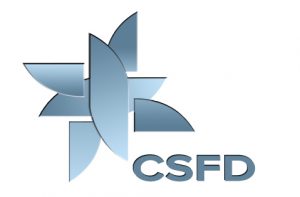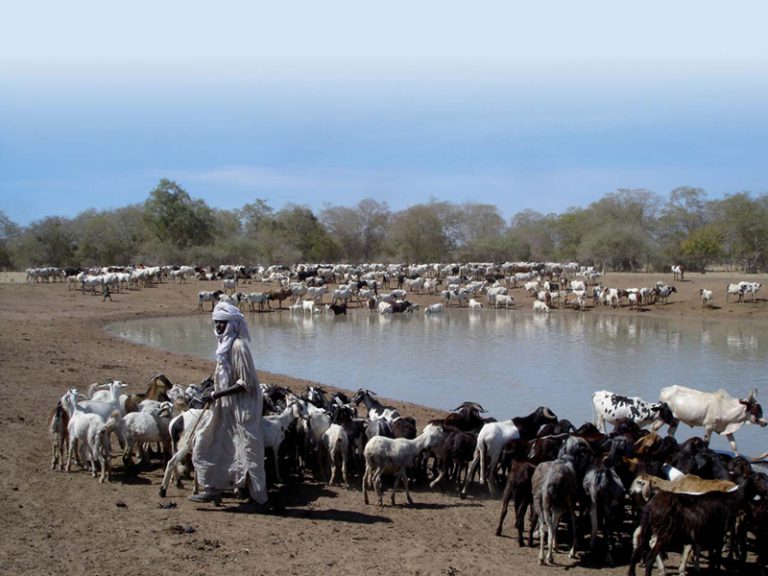A working group pooling members of the international scientific community and civil society was formed in 2008 as a French initiative. It aims to address the imperatives outlined in the United Nations Convention to Combat Desertification: developing a minimum set of indicators to help policy makers assess desertification and land degradation trends on different scales and also to implement the Strategic Objectives. This will ultimately lead to the development of a series of simple indicators, while specifying all aspects to facilitate their use: from the method to the availability of primary data, in addition to their feasibility and associated costs.
The United Nations Convention to Combat Desertification (UNCCD) adopted a 10-year Strategic Plan at the 8th Conference of the Parties in Madrid (2007), which referred to indicators to enable:
• decision makers to evaluate applications of this strategy and progress achieved on the operational objectives;
• drawing up of national and regional reports;
• assessment of land degradation and desertification trends on different scales, progress achieved through local projects, and the impact of public policies, etc.
The French Scientific Committee on Desertification (CSFD) decided, in the second half of 2008, to launch a working group on indicators to generate data for scientists in the European Union and the UNCCD Committee on Science and Technology, with the support of the French Ministry of Ecology, Energy, Sustainable Development and the Sea in charge of green technologies and climate change negociations. These data are taken into consideration by the group of experts commissioned by the Convention to develop a minimum set of indicators (Len Berry et al.), and by working groups of the Dryland Science for Development consortium that is responsible for organizing the scientific conference on this topic within the framework of the UNCCD Conference of the Parties in 2009.
This work is carried out in cooperation with European DesertNet (EDN), which includes over 300 scientists from 51 countries. Civil society organizations have also been actively participating in this indicator inventory, along with (amongst others) the International Federation of Agricultural Producers (IFAP) since 2008.
A useful tool for civil society and decision makers
The study framework is not strictly scientific, since the users are decision makers and field staff. The minimum set of indicators should be validated by the scientific community with simple messages and applicable results. It is essential not to overlook people who will make use of the observations and measurements. The indicators should thus be simple, easy to measure, applicable and readily interpreted by non-scientists and adoptable by users: decision makers, NGOs, professional agricultural organizations, etc. They should also address clearly defined objectives. A few shortcomings should, however, be mentioned.
• The indicators are not universal. They are not simply ‘raw’ data. They are included in environmental, historical and institutional settings. A set of indicators that is relevant for one site and given time may not be suitable for another site and time because of the change in setting. The indicators thus have spatiotemporal validity limits. It is hard to define indicators that generate information at different implementation levels (global to local). There may be no universal symbols and signs of land degradation and of successful fights against desertification. Moreover, a list of indicators is not permanent and may change over time according to changes in settings.
• The indicators can be unclear. They should be used with caution because the interpretations may be totally contradictory. For instance, an increase in the number of power pumps may be interpreted as a sign of national or local development, whereas it could also be interpreted as a desertification factor!
• The indicators should be reliable and significant. They help to interpret a real situation permanently and continuously since they measure changes such as an improvement (or not) in population conditions. They should enable assessment of a state at a given time as well as its temporal variation.
• Their measurement and application costs should be low. The proposed indicators should be in line with the capacity of institutions that measure and interpret them. This could depend on the availability and type of required data (database, field collection, remote sensing, etc.) and the method required to obtain the information.
Developing SMART indicators: Specific, Measurable, Attainable, Realistic, Timely and Affordable?
In the light of these shortcomings, the working group decided to select existing and already tested indicators. A broad ranging literature review was thus carried out and the statistical databases of the main international organizations were surveyed (FAO, World Bank, GEF, UNEP, etc.). A list of around 300 indicators, supplemented by those proposed by IFAP and EDN, was reviewed according to the relevance of the indicators in addressing the Convention’s strategic objectives.
This first selection was then classified according to different criteria:
• The Convention’s strategic objectives: alleviating poverty, etc.
• The topic investigated: Institutional and governance; Land use and plant cover; Socioeconomy; Vegetation and fauna; Water and soils.
• The analysis and implementation scale: local or global.
• Land degradation causal indicators.
• Land degradation effect indicators.
Four indicator working lists were drawn up:
• national data to characterize each country, available in national statistical databases;
• national (or regional) indicators (cf. list on following page);
• local indicators derived from field and specific surveys of local situations;
• significant, but more complex, indices of situations and trends, and pooling of several indicators.
And finally…
Finally, for each selected indicator, the working group will present—in the form of fact sheets—all information that end users will need to apply them:
Indicator name, definition and unit
Convention strategic objective(s) for which the indicator applies
Topic(s): Soil and water, Vegetation and fauna, etc.
Justification for using the indicator
Spatial scales
Indicator validity period
Methods (methods for data collection, measurement, calculation, etc.) and by whom
Availability of primary data acquired by national institutions and research programmes
Availability of primary data in international institutions
Cost of acquiring data required for indicator calculation (indications)
Interpretation, thresholds, benchmarks and validity limits
References and bibliography



